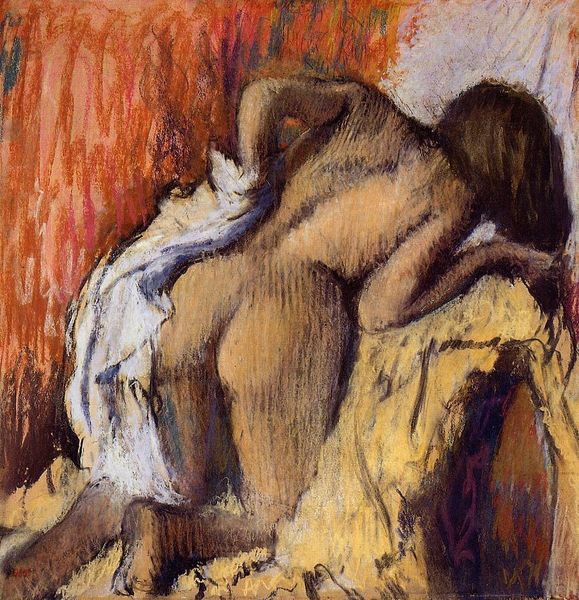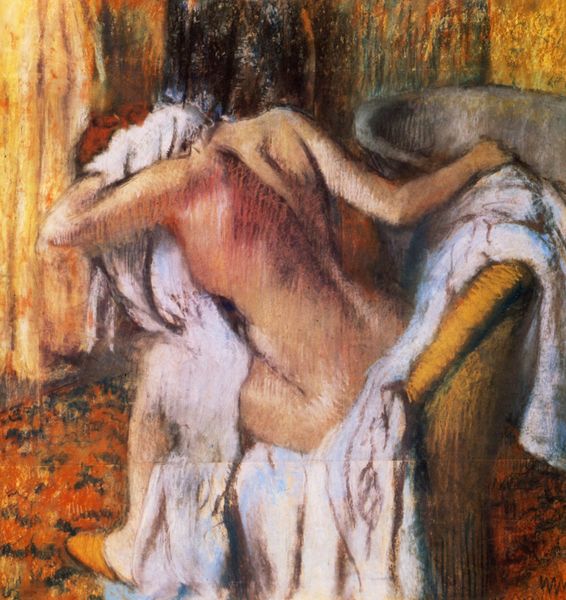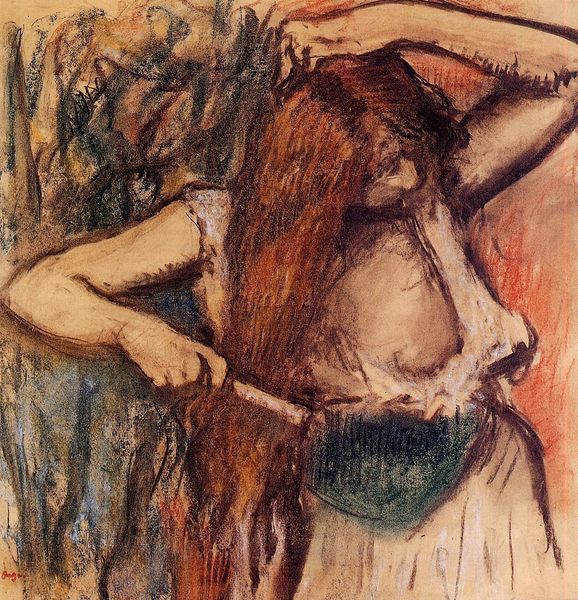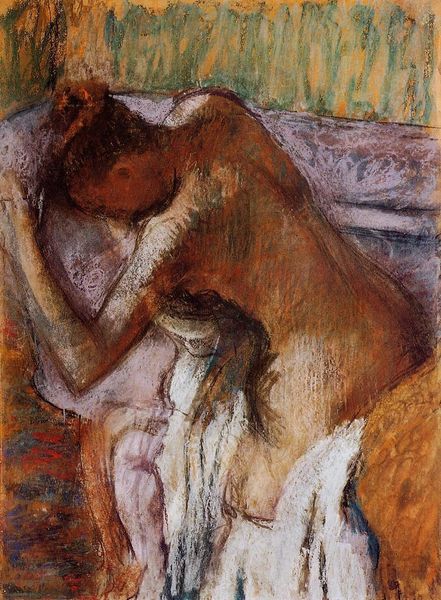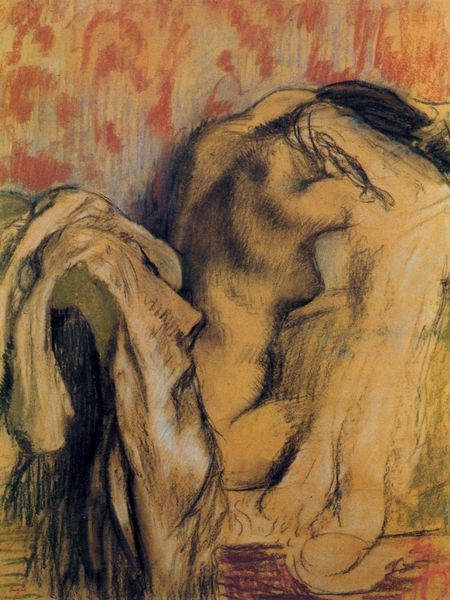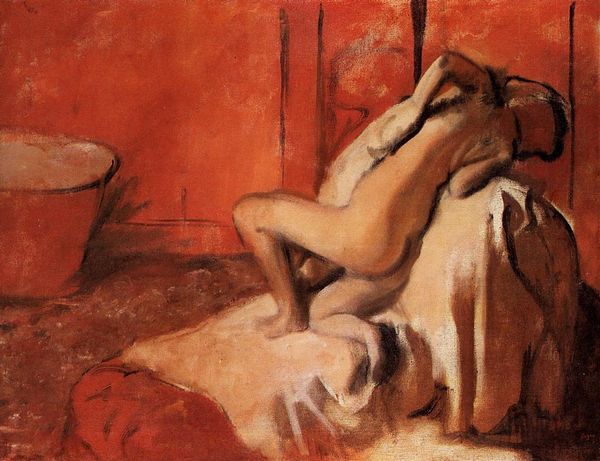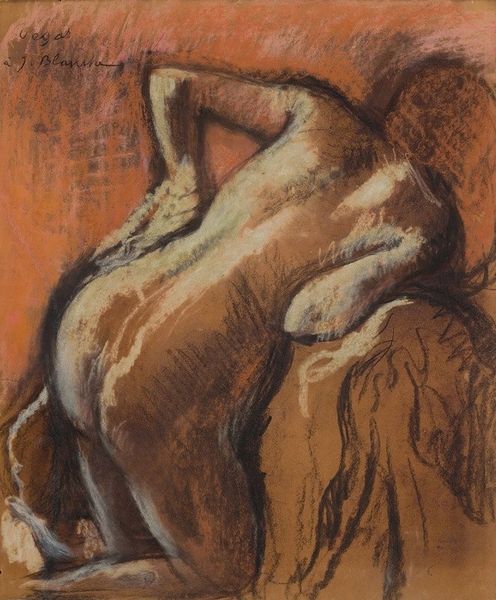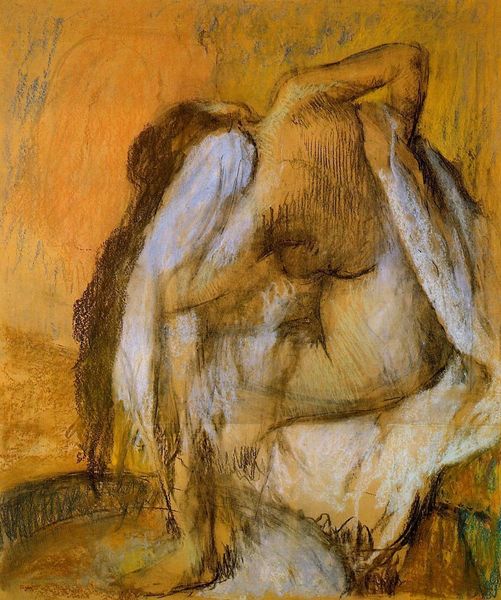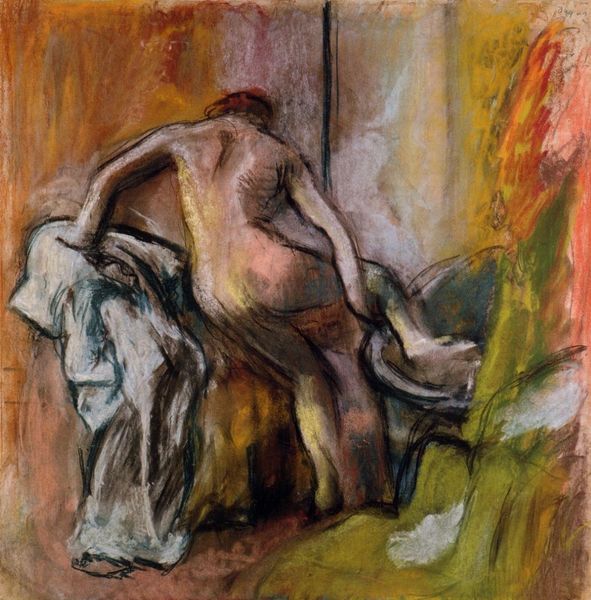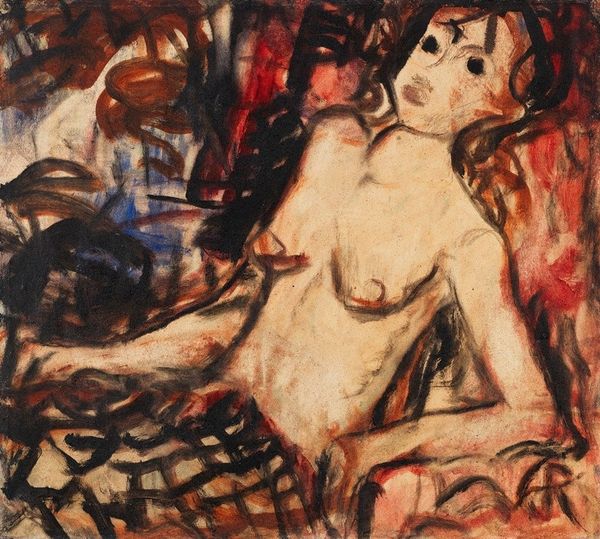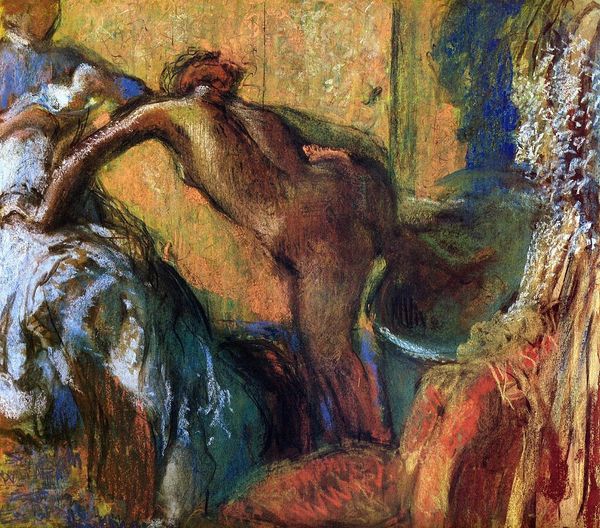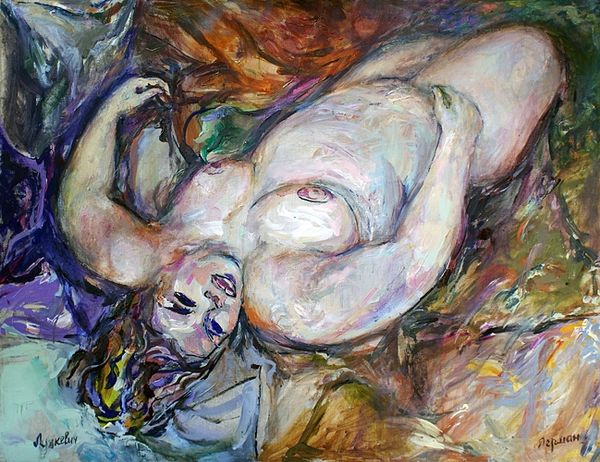
Dimensions: 47 x 60.3 cm
Copyright: Public domain
Curator: This is Edgar Degas' "After Bathing, Woman Drying Herself," created around 1892. It's a charcoal drawing and falls into the intimist movement, currently held in a private collection. What strikes you first about this piece? Editor: Immediately, I'm drawn to the vulnerability. There's something very raw and personal about the image of a woman in such a private act. The rough texture of the charcoal really adds to that feeling. Curator: Absolutely. Degas' approach was indeed considered radical. He moved away from idealized nudes and captured women in candid, unposed moments of everyday life. This shifted the focus from objectification to observation. In this case the shift was a consequence of impressionistic art and new economic possibilities with dealer-critic system and Parisian Bourgeoisie collecting and making these pieces popular. Editor: That resonates deeply. To me, the towel draped over her head almost acts as a veil, both concealing and revealing something essential about the female experience, of privacy. And there's an earthy symbolism too, isn't it? Curator: The act of bathing is laden with connotations—purification, cleansing, rebirth, intimacy—these are universal ideas of renewal. We tend to forget these simple rituals in a post-industrial context, as daily life becomes increasingly public. Editor: Exactly. Her posture conveys exhaustion, perhaps, but also a sense of quiet resilience. And even within that, the intimacy is quite profound for its lack of artifice. What's interesting is the towel hides her expression. Curator: Yes, the lack of direct eye contact, it keeps it more accessible. What you're really looking at is your idea of a woman relaxing at her home. At the same time the intimate act represented meant they where usually bought, sold, and exhibited privately, further emphasizing a societal duality, but for private consumption. Editor: Indeed! So, ultimately, is that intimate duality the secret to the image's continuing strength? That these intimate rituals of renewal still touch on themes that have endured since well before art history? Curator: The themes endure, certainly, though I think the painting’s impact also hinges on how it mirrored the radical shifts in cultural values as they emerged around its creation and reception. It offered the French Bourgeoisie the possibility to see and connect themselves to each other, intimately, but within accepted social constructs. Editor: A vital intersection to acknowledge when observing art's ability to communicate its moment in history. Curator: Absolutely, something to hold on to as we navigate what's next!
Comments
No comments
Be the first to comment and join the conversation on the ultimate creative platform.
